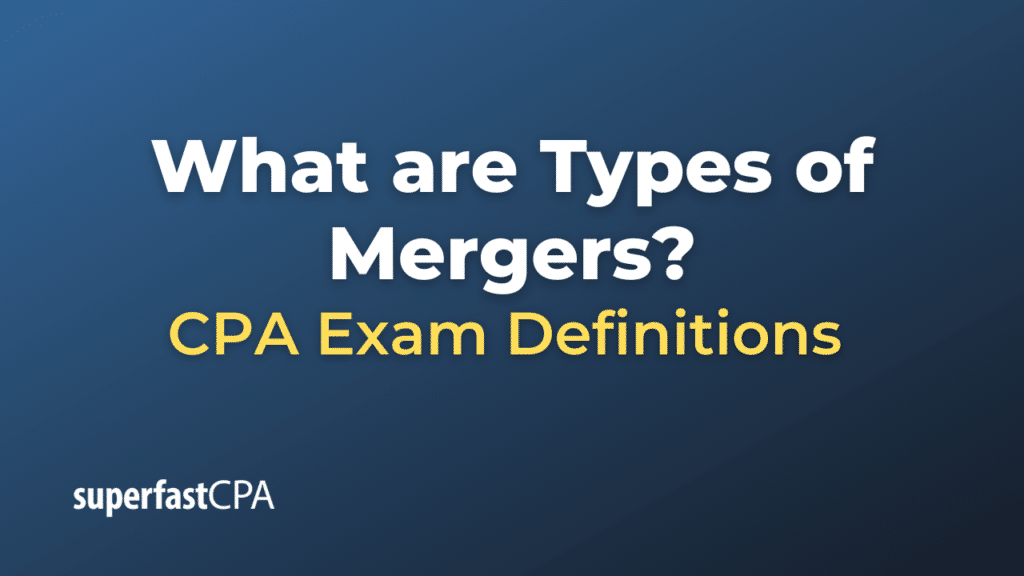Types of Mergers
Mergers involve the combination of two companies to form a single company. They are strategic decisions made to achieve various objectives, such as gaining a competitive edge, expanding into new markets, or realizing operational efficiencies. Here are the primary types of mergers, classified based on the business relationship between the merging companies:
- Horizontal Merger:
- This involves two companies that are direct competitors and operate in the same industry and market segment.
- Example: If Pepsi were to merge with Coca-Cola, it would be a horizontal merger, since both are major players in the soft drink industry.
- Vertical Merger:
- A vertical merger involves companies operating at different stages within the same industry’s supply chain.
- Example: A car manufacturer like Ford merging with a tire company like Goodyear. The car manufacturer is the customer of the tire company in the supply chain.
- Conglomerate Merger:
- This type of merger happens between firms that operate in entirely different industries. It’s a way to diversify business operations and investments.
- Example: A major tech company like Google merging with a consumer goods company like Procter & Gamble.
- Concentric Merger:
- Two businesses serving the same customers in a particular industry but they don’t offer the same products/services. They have different businesses that are related in some way.
- Example: A computer hardware manufacturer merging with a computer software developer.
- Market Extension Merger:
- This involves companies that sell the same products but compete in different markets. The objective is typically to gain access to a larger market and a bigger client base.
- Example: A bank that operates primarily in the U.S. merging with a bank that operates primarily in Europe.
- Product Extension Merger:
- Companies selling different but related products in the same market combine. This allows the combined entity to group together their products and gain access to a larger set of customers.
- Example: A company that manufactures cameras merging with a company that produces camera lenses.
It’s worth noting that the real-world classifications and outcomes of mergers can sometimes be complex and might encompass elements from multiple categories described above.
Example of Types of Mergers
Let’s take a closer look at two of the merger types with real-world examples:
- Horizontal Merger:
- Real-world example: In 2008, two of the biggest breweries, Anheuser-Busch and InBev, merged to form Anheuser-Busch InBev. Both companies were directly competing in the beer market, and their merger formed one of the largest beer companies globally. The goal of this horizontal merger was to create a stronger global leader in the beer industry and realize cost efficiencies.
- Vertical Merger:
- Real-world example: In 2018, AT&T, a telecommunications giant, acquired Time Warner, a major content producer. This is a vertical merger because AT&T, which provides distribution through its cable and wireless networks, combined with Time Warner, which produces content through entities like HBO, Warner Bros., and CNN. The idea behind this merger was to allow AT&T to both produce and distribute content, capturing more value from both ends of the supply chain.
Each of these examples highlights the strategic intentions behind the mergers: capturing more market share, expanding across the supply chain, or diversifying product offerings. The exact outcomes and long-term benefits of mergers often play out over years, and they are closely watched by both industry analysts and regulatory bodies to ensure that they promote competition and benefit consumers.













